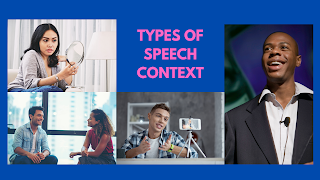Every day we deal with various kinds of
conversations. Many of us wake up checking our phones if there are new messages
in chat groups and email apps. Some have the confidence to take photos of
themselves and posting them on their Facebook or Instagram accounts with the
caption “Woke up like this” which surely gain reacts and comments from their
friends. I bet many of us look in the mirror when we leave our bed and check
our faces. If you are living with your family, mornings are filled with
greetings and talks about food and activities for the day. When eating
breakfast, some prefer to watch the morning news program while chewing the
sumptuous meal.
Help me grow my YouTube channel. Visit Carliculum and subscribe.
During the pre- pandemic time, you engage with
your classmates in group works and reporting. You answer your teacher’s
questions and you inquire for the things unclear to you. During break time, you
exchange stories with your friends while enjoying your snacks. In eight hours
you stay in the school, you communicate multiple times with various people.
When you home, you talk with your family and narrate what happened the whole
day. Before sleeping, some of you have activities like writing a diary,
meditation or prayer, writing to-do list and the like.
Now that we are in the pandemic, physical
interaction became limited. We miss going out with our friends and relatives and
share moments with them. Good thing that there are social media platforms we
use to reach out and enjoy things even we are confined to our houses. With the
advancement of technology, we can connect to thousands of people wherever we
are and in real time. Thus, communication is diverse in terms of the situations
or environment we are in. This is speech context comes in.
Speech context is about the environment
where the communication happens and how the message is relayed during the
process. By knowing the speech context of a conversation, we can easily
understand the message and we can make feedback clearly and appropriately.
There are four types of speech context:
intrapersonal, interpersonal, public, and mass communication.
Intrapersonal- this communication happens
within oneself. This means that the speaker acts as the source and the receiver
of the message. When you do self- reflection, you analyze your thoughts and
feelings. By knowing what you feel, you can assess yourself on how to react on
it.
Examples:
When you are asked what degree program you want
to pursue in the college, you think of your interests and talents, and your
strengths and weaknesses before answering.
You make yourself calm after realizing that you
lost the food container while you are on your way back home.
Interpersonal- this communication involves two
or more people. The conversation can be formal or informal, intimate or casual
depending on the relationship people involved have.
There are two types of interpersonal
communication: dyad and small group.
Dyad communication- two people are involved in
this communication.
Examples:
You talked to your mother that you need an
illustration board for your activity tomorrow.
Your doctor asks about what you want to consult
it.
Small group- three but not more than twelve
people are part of the conversation. This type of communication is present
during brainstorming or collaborating with other people.
Examples:
Your group is pitching ideas for the research
title to be presented.
Your father told the whole family that the trip
to Hundred Islands will not push through because of the tropical depression.
Public- in this type of communication, you can
deliver a message to bigger number people in a venue. When someone is giving a
message to the public, he/ she usually inform or persuade people.
Examples:
You express your message of thanks during the
commencement exercises in the school.
A candidate tells his/ her platform in a grand
rally.
Mass communication- this communication has
television, social media, newspaper, magazines, and the like as channels. This
type of communication reaches millions of people.
Examples:
A weather forecaster informs the audiences about
the location of the typhoon.
A blog entry about the Tondol White Sand Beach
became trending on social media.
Now that you learned about the different types
of speech context, it is time to take this short test to know how much you
learned from this lesson.
Direction: Identify the type of speech context
in the following situations.
- The town doctor does a live broadcast on Facebook about the latest COVID-19 update.
- Your parents are talking about the monthly bills.
- A pastor gives his sermon to the attendees.
- You exclaimed “I can do this” before your turn to sing on the stage.
- DepEd TV airs TV lesson.








0 Comments